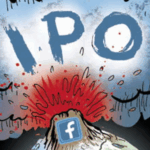Increased AI usage carries with it some serious environmental implications.
But the team at Scope3 believes that selective, strategic use of AI upfront can reduce emissions down the line, especially when it comes to notoriously inefficient sectors like ad tech.
On Thursday, the sustainability startup announced the launch of two new products to help brands cut down on both financial and environmental waste.
First there’s the Agentic Advertising platform, which is designed to standardize and optimize key transactions across PMPs, programmatic campaigns and direct buys.
Then there’s the Brand Standards tool, which sits atop Scope3’s agentic platform and will allow marketers to refine their brand suitability guidelines beyond the traditional keyword blocking structure.
The goal, said industry veteran and Scope3 CEO Brian O’Kelley, is not to inject sustainability into the ad tech industry, but to make the industry more sustainable in the first place with more cost-effective tools.
“I yell at my 15-year-old for leaving the lights on,” O’Kelley told AdExchanger. “This is an entire industry that’s effectively leaving the lights on. It’s millions of servers and data centers serving ads to nobody.”
What Scope3’s new AI products do
Like Scope3’s other existing products, the agentic AI platform can automatically filter out inventory that’s considered a high climate risk, meaning it contributes to higher emissions when compared to certain benchmarks. It also filters out made-for-advertising (MFA) content, which, in addition to wasting ad spend, can also waste energy.
More importantly, the agentic platform will be able to tweak and update media buys in real time – a far cry from the AppNexus days, O’Kelley said, when his team would manually refresh reports at 12:01 am and then “frantically run around and optimize for the next 45 minutes” before going to bed.
Although still currently in testing mode, the agentic AI will launch with support from Index Exchange, Media.net and LiveRamp, among other tech partners, sometime in Q2.
The Brand Standards product, meanwhile, came out of the conversations Scope3 was having with clients about ensuring their media buying strategies are more effective and responsible.
O’Kelley first played around with designing a brand suitability engine himself while on a flight to Japan, using an off-the-shelf LLM and guidelines taken from a big brand website to train the model. The version he designed ended up blocking 80% fewer news and entertainment websites and was much more nuanced in what it chose to exclude. (The traditional model he tested against, for example, kept blocking the term “champagne lipstick” for referencing alcohol, even though “champagne” actually refers to the color of the product.)
Since November, Scope3 has been building out this rudimentary engine with scaled-up AI technology from newly acquired company Adloox. So far it contains 15 different vertical-specific models for industries like beauty, pharmaceuticals and automotive, and tests with both clients and participating publishers have been positive in terms of performance lift.
Both products, O’Kelley said, also show clients the associated carbon emissions levels throughout every step in the process, so they can estimate upfront how much will be needed to train and run the AI model. This not only holds Scope3 itself accountable but serves to “remind people that using AI is expensive from a carbon perspective.”
AI’s impact on the environment
Not too long ago, digital technology was frequently touted as an eco-friendly alternative to physical production and consumption. Just look at how many companies have gone “paperless” over the past decade, often basing their decision on a desire to save trees rather than costs.
The truth of tech’s ecological footprint is, of course, much more complicated. Sure, a 2022 report from the World Economic Forum suggests that digital solutions could reduce global greenhouse gas emissions by up to 20% in the next 25 years. But at the same time, information and communications technology (ICT) accounted for between 2% and 4% of global greenhouse gas emissions in 2020, according to multiple peer-reviewed studies.
Recent, well-hyped tech trends that require data centers, like cryptomining and generative AI, have only added to that carbon footprint, souring some consumers against these products in the process. The ad tech market hasn’t been affected much by these concerns yet – after all, consumers aren’t the ones deciding to buy ads, O’Kelley said. Still, the larger conversation has helped Scope3 talk more about digital emissions as a real concern, rather than an abstract concept.
Moving the needle on ad tech sustainability is more about convincing advertisers and ad tech suppliers that there’s something in it for them, said O’Kelley. As an added benefit, focusing on product efficacy allows the company to transcend any political rhetoric associated with environmental awareness.
“If you’re making a compromise to buy green, that’s a difficult business proposition,” he said. “If, on the other hand, you’re using products that happen to be green but are awesome products, then you’re going to use them either way.”















